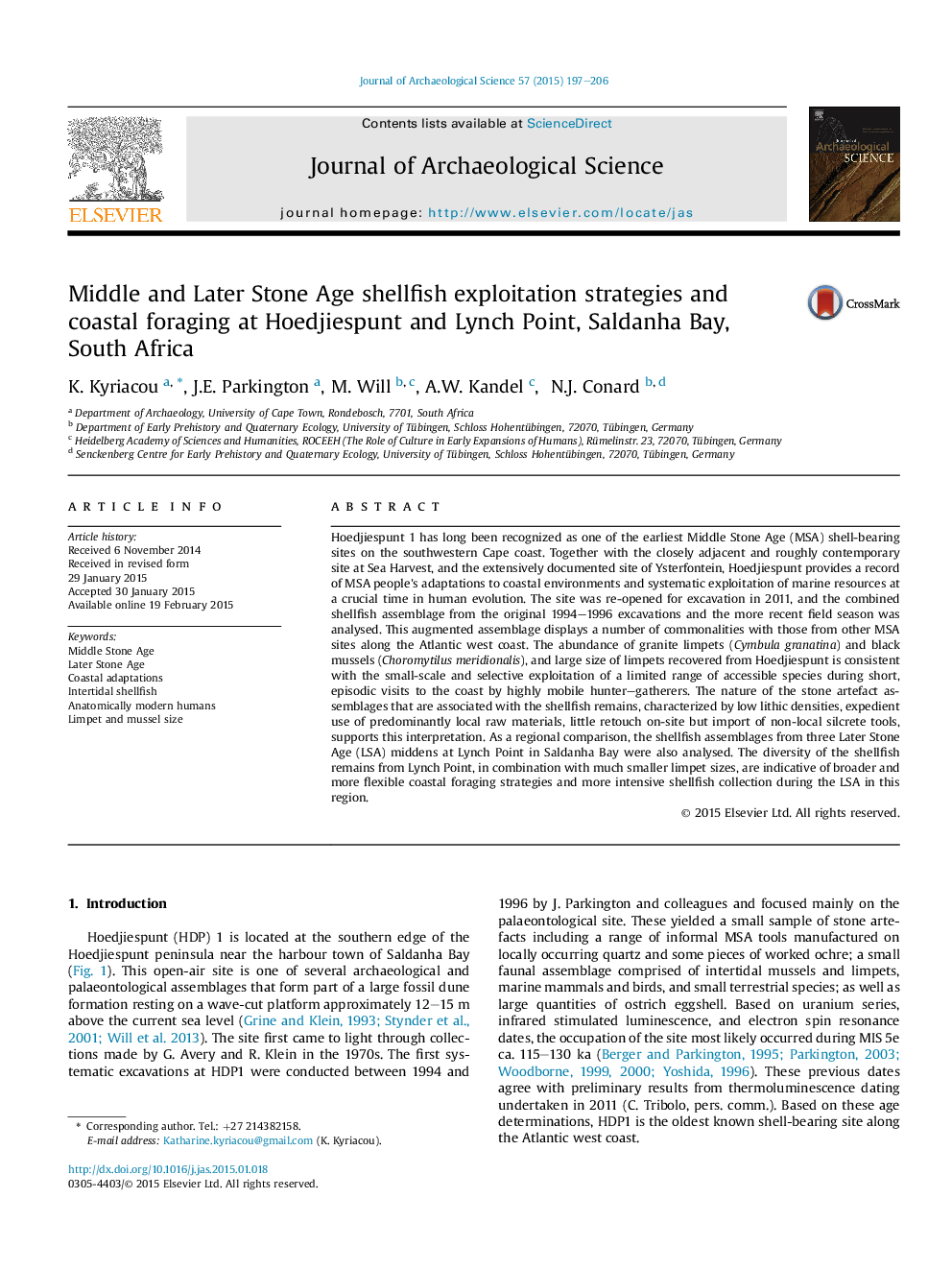| کد مقاله | کد نشریه | سال انتشار | مقاله انگلیسی | نسخه تمام متن |
|---|---|---|---|---|
| 7442040 | 1483903 | 2015 | 10 صفحه PDF | دانلود رایگان |
عنوان انگلیسی مقاله ISI
Middle and Later Stone Age shellfish exploitation strategies and coastal foraging at Hoedjiespunt and Lynch Point, Saldanha Bay, South Africa
دانلود مقاله + سفارش ترجمه
دانلود مقاله ISI انگلیسی
رایگان برای ایرانیان
کلمات کلیدی
موضوعات مرتبط
مهندسی و علوم پایه
مهندسی مواد
دانش مواد (عمومی)
پیش نمایش صفحه اول مقاله

چکیده انگلیسی
Hoedjiespunt 1 has long been recognized as one of the earliest Middle Stone Age (MSA) shell-bearing sites on the southwestern Cape coast. Together with the closely adjacent and roughly contemporary site at Sea Harvest, and the extensively documented site of Ysterfontein, Hoedjiespunt provides a record of MSA people's adaptations to coastal environments and systematic exploitation of marine resources at a crucial time in human evolution. The site was re-opened for excavation in 2011, and the combined shellfish assemblage from the original 1994-1996 excavations and the more recent field season was analysed. This augmented assemblage displays a number of commonalities with those from other MSA sites along the Atlantic west coast. The abundance of granite limpets (Cymbula granatina) and black mussels (Choromytilus meridionalis), and large size of limpets recovered from Hoedjiespunt is consistent with the small-scale and selective exploitation of a limited range of accessible species during short, episodic visits to the coast by highly mobile hunter-gatherers. The nature of the stone artefact assemblages that are associated with the shellfish remains, characterized by low lithic densities, expedient use of predominantly local raw materials, little retouch on-site but import of non-local silcrete tools, supports this interpretation. As a regional comparison, the shellfish assemblages from three Later Stone Age (LSA) middens at Lynch Point in Saldanha Bay were also analysed. The diversity of the shellfish remains from Lynch Point, in combination with much smaller limpet sizes, are indicative of broader and more flexible coastal foraging strategies and more intensive shellfish collection during the LSA in this region.
ناشر
Database: Elsevier - ScienceDirect (ساینس دایرکت)
Journal: Journal of Archaeological Science - Volume 57, May 2015, Pages 197-206
Journal: Journal of Archaeological Science - Volume 57, May 2015, Pages 197-206
نویسندگان
K. Kyriacou, J.E. Parkington, M. Will, A.W. Kandel, N.J. Conard,